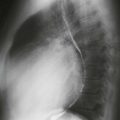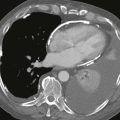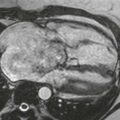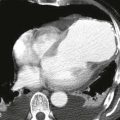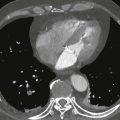CASE 73
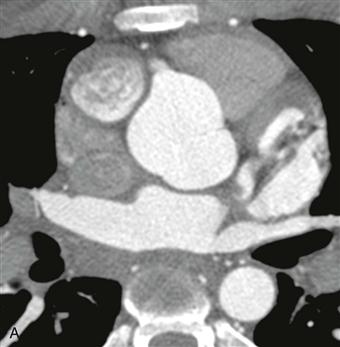
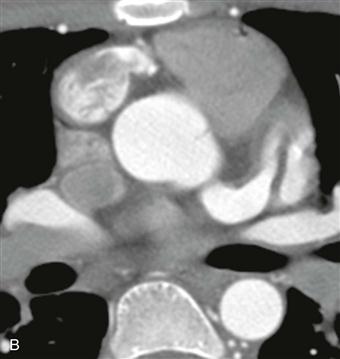
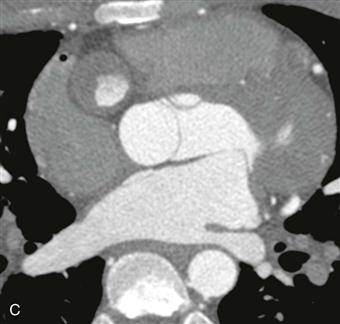
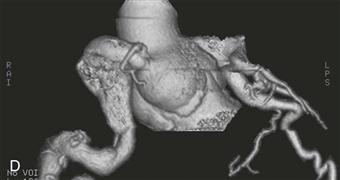
1. What are potential causes of coronary artery aneurysm? (Choose all that apply.)
B. Iatrogenic
D. Infection
E. Anomalous left coronary artery from the pulmonary artery (ALCAPA)
2. What is the most likely diagnosis if the coronary artery abnormalities have been present since an early childhood illness?
3. Which of the following is currently used to prevent this complication in Kawasaki disease?
A. Vaccination
B. γ-Globulin
D. Beta blocker
4. What is the most likely patient presentation for a coronary artery aneurysm?
A. Rupture
B. Thrombosis
D. Asymptomatic
ANSWERS
Reference
Díaz-Zamudio M, Bacilio-Pérez U, Herrera-Zarza MC, et al. Coronary artery aneurysms and ectasia: role of coronary CT angiography. Radiographics. 2009;29(7):1939–1954.
Cross-Reference
Cardiac Imaging: The REQUISITES, ed 3, pp 220–223.
Comment
Imaging
Multiple axial images of the coronary arteries show a large right coronary artery aneurysm (Figs. A–C). There is slow flow within the aneurysm indicated by unopacified blood (Figs. A–C). There is also an aneurysm of the left main coronary artery (Fig. B). This patient had a previous history of Kawasaki syndrome.
Definition of Aneurysm or Ectasia
Coronary artery dilation can be classified as either vessel ectasia or an aneurysm. Vascular ectasia refers to diffuse dilation of a coronary artery. Ectasia often occurs in vessels with a high-flow state owing to a coronary artery fistula, coronary anomaly, or opposite vessel coronary artery stenosis. A coronary artery aneurysm is defined by a dilated segment that is 1.5 times larger than an adjacent normal segment and does not exceed 50% of the total vessel length. In children younger than 5 years, a coronary artery is considered aneurysmal when it exceeds 4 mm in diameter.
Classification
Coronary artery aneurysms are further classified into true or false aneurysms. True aneurysm walls are composed of all three vessel layers—the intima, media, and adventitia. Conversely, false aneurysms are contained by only one or two vessel layers and are more prone to rupture. False aneurysms are typically the sequela of iatrogenic injury during cardiac catheterization or blunt trauma.
Demographics
In the United States, coronary artery aneurysms are most commonly seen in association with atherosclerosis. In Japan, Kawasaki syndrome is the most common cause of coronary aneurysms. Kawasaki syndrome is a self-limited panarteritis that affects multiple organ systems. It may be secondary to an infectious process or an autoimmune reaction. The feared complications of Kawasaki syndrome are related to the cardiovascular system and include coronary artery aneurysms, premature atherosclerosis, and myocardial infarction. Approximately 25% of untreated patients may develop coronary artery aneurysms with complications often occurring years after the initial diagnosis. Prompt recognition of this syndrome allows clinicians to initiate early γ-globulin and aspirin therapy, which reduces the risk of developing a coronary artery aneurysm to 5%.

